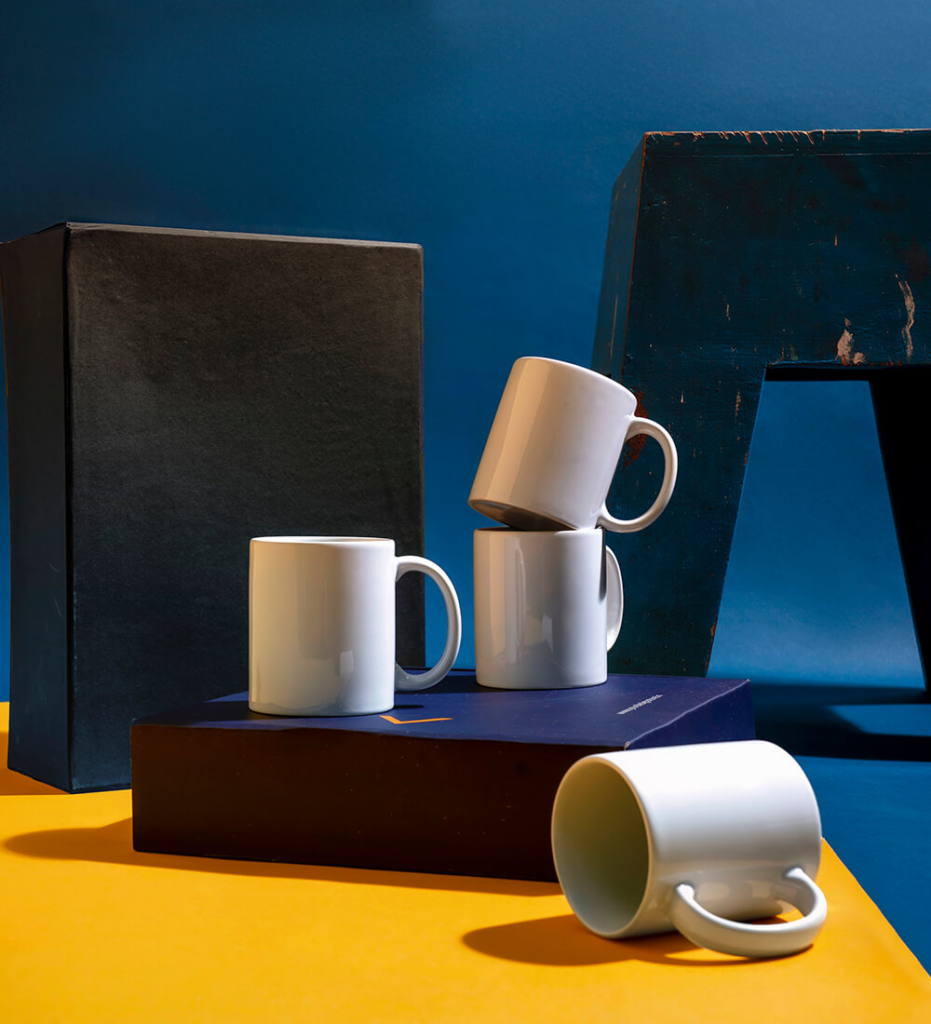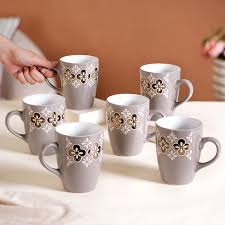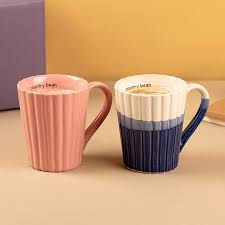Understanding the Coffee Mug Market Landscape
The coffee mug market has witnessed significant growth in recent years, reflecting broader trends within the beverage industry. As of 2023, the global coffee mug market is estimated to be worth several billion dollars, with an expected compound annual growth rate (CAGR) of around 5% over the next five years. This upward trajectory is driven by various factors including rising coffee consumption, lifestyle changes, and the growing trend of personalized and specialty coffee products. Manufacturers have ample opportunities to capitalize on these market dynamics.
Consumer preferences have shifted considerably, with a noticeable demand for unique designs and innovative materials. Traditional ceramic mugs continue to dominate the market; however, there is an increasing inclination towards insulated and travel mugs due to their practicality and convenience. Eco-friendly materials, such as bamboo and recycled plastics, are also garnering attention as more consumers become conscious of their environmental impact. This trend presents a promising avenue for manufacturers to explore sustainable practices while appealing to environmentally minded customers.
Additionally, emerging trends such as minimalism and artisanal craftsmanship have influenced consumer purchasing decisions. Many shoppers now prioritize items that not only serve a functional purpose but also align with their personal aesthetic. This inclination has spurred manufacturers to experiment with various shapes, colors, and finishes, making the coffee mug not just a functional item but also a statement piece. Designs that integrate technology, such as self-heating mugs or smart temperature control, are also gaining traction, further contributing to market growth.
By understanding these current market dynamics, coffee mug manufacturers can strategically position their products to meet evolving consumer demands, embrace emerging design trends, and adopt new materials, ensuring a competitive edge in the vibrant coffee mug market. With these insights, stakeholders can navigate this expansive landscape effectively, ultimately driving the success of their offerings.

Target Audience: Who Buys Coffee Mugs?
The coffee mugs market comprises a diverse range of consumer segments, each driven by distinct motivations and preferences. Understanding these demographics is crucial for manufacturers aiming to cater to their specific target audience effectively. The primary consumer segments include casual coffee drinkers, enthusiasts, and collectors, each having unique characteristics and purchasing behaviors.
Casual coffee drinkers represent the largest segment, often purchasing mugs for everyday use. These consumers look for functional, durable, and aesthetically pleasing designs that fit seamlessly into their routine. They tend to prefer versatile mugs that can be used at home or the office, often opting for practical features such as insulation, size, and ease of cleaning. The purchasing decision for this group is mainly influenced by practicality and everyday usability.
On the other hand, coffee enthusiasts are passionate about their brewing rituals and often seek high-quality mugs that enhance their drinking experience. These consumers are more likely to invest in unique designs that reflect their personalities or align with their coffee culture. They may gravitate towards mugs made from specific materials, such as ceramic or glass, which can provide an elevated sensory experience when enjoying their favorite beverage. Additionally, enthusiasts may attend specialty coffee events or join online communities, thus influencing their preferences towards trendy or innovative mug designs.
Finally, collectors form a niche segment within the coffee mugs market. These individuals often seek out rare or limited-edition pieces, motivated by a desire to showcase their collection or express their individuality. Collectors frequently engage in purchasing directly from artists or participating in trade shows, demonstrating a willingness to invest in unique, high-quality designs for their collections. In summary, understanding these diverse segments allows manufacturers to tailor their offerings to meet the varying preferences and motivations of coffee mug consumers, paving the way for successful marketing strategies.
User Experience: Designing for Functionality and Aesthetics
The user experience in coffee mug design is a pivotal factor that significantly impacts consumer satisfaction and, consequently, sales. Designing a coffee mug is not merely about aesthetics; it encompasses a deep understanding of ergonomics, insulation properties, and visual appeal. Coffee mugs must be comfortable to hold, which means considering the shape and size of the handle, as well as the weight of the mug itself. A well-designed handle enhances grip and can accommodate various hand sizes, facilitating ease of use for a broader audience.
Insulation properties are another critical aspect of coffee mug design. Effective insulation is essential to maintain the temperature of the beverage, keeping it hot for coffee drinkers or cold for those preferring iced drinks. Mugs that utilize advanced materials, such as double-wall stainless steel or vacuum insulation, not only provide practical benefits but are also appealing to consumers who prioritize functionality in their choices. This innovation allows manufacturers to introduce products that meet the diverse needs of coffee enthusiasts, leading to increased customer loyalty.
Visual appeal cannot be overlooked in the competitive coffee mug market. Aesthetic elements such as color, texture, and design patterns play a significant role in attracting consumers. Customizable mugs, which allow customers to make personal choices regarding their design, have gained popularity for their ability to connect emotionally with users. For instance, brands that offer unique themed collections or collaborate with artists can create a sense of exclusivity, enriching the user experience. Notable examples include artisan mugs that feature hand-painted designs, resonating particularly well with consumers who value craftsmanship.
Ultimately, a successful coffee mug will seamlessly meld functionality with aesthetics, enhancing the overall user experience. Thoughtful design choices reflect an understanding of consumer preferences, driving customer satisfaction and brand loyalty.

Marketing Strategies for Coffee Mug Manufacturers
In the competitive coffee mugs market, manufacturers must adopt effective marketing strategies to capture their audience’s attention and drive sales. A comprehensive approach that includes both online and offline tactics is essential for maximizing reach and engagement with potential customers.
Online marketing techniques have become increasingly vital. Utilizing social media platforms, such as Instagram, Facebook, and Pinterest, offers an opportunity to showcase coffee mug designs and engage with followers through visually appealing content. By creating targeted advertisements, manufacturers can reach specific demographics that are likely to be interested in purchasing unique coffee mugs. Furthermore, investing in Search Engine Optimization (SEO) can enhance visibility on search engines, attracting more visitors to product websites and increasing organic traffic.
Offline marketing remains relevant as well. Participating in local craft fairs, trade shows, and community events allows manufacturers to interact directly with consumers and showcase their products in person. Offering promotional discounts, loyalty programs, or coupon codes can incentivize customers to make a purchase and encourage repeat business. Additionally, collaborating with coffee shops and local businesses can create mutually beneficial partnerships that expand the audience for coffee mugs.
Engaging with customers through feedback solicitation is another essential strategy. By actively seeking customer reviews and testimonials, manufacturers gain valuable insights into the preferences and needs of their target audience. This feedback can be used to refine product offerings and enhance customer satisfaction.
Storytelling plays a critical role in branding for coffee mug manufacturers. By effectively communicating the unique attributes of their products—such as handmade craftsmanship, eco-friendly materials, or cultural significance—manufacturers can build an emotional connection with their audience. Crafting a compelling narrative around the brand not only differentiates products in a crowded market but also resonates with consumers on a deeper level.
In conclusion, a multifaceted marketing strategy that incorporates online and offline techniques, customer engagement, and storytelling will empower coffee mug manufacturers to capture the attention of their audience and boost sales effectively.

